Your Smartphone in 2018: 15 Futuristic Features
In many ways, the evolution of the smartphone since the debut of the original iPhone in 2007 has been a predictable straight line —bigger screen, more powerful processors, longer battery life, faster data connections, higher-resolution cameras and more apps. But recent advances have signaled a potential sea-change in smartphone evolution. We’re talking bendable screens and other radically different designs, eye control and security, and Dr. McCoy-like tricorder functions. Here are 15 smartphone features to expect in the next five years.
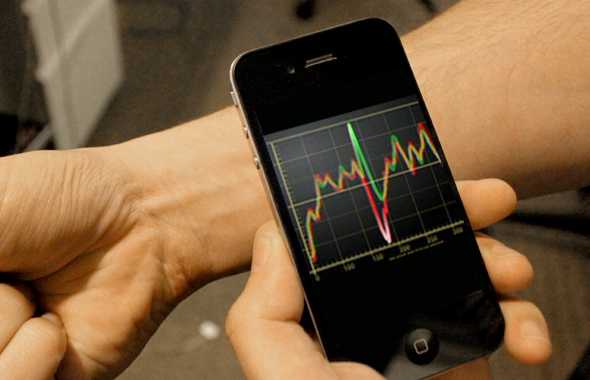
Tricorder Smartphones
Where We're Headed: Bluetooth 4.0 has triggered an explosion in wearable sensors that transmit biomedical (e.g., heart rate, blood pressure), exercise (e.g., distance walked, calories burned) and environmental (e.g., temperature, humidity) data to a smartphone — but each of these sensors requires a separate app. Samsung has already begun to build some sensors into the Galaxy S4, but in five years, expect a smartphone to win the “Star Trek”-inspired Qualcomm Tricorder XPRIZE. Prediction: By the end of this decade, we'll be sporting wearable sensors imbedded in shoes, glasses, belts, watches and clothing. These sensors will not only enable us to monitor all of the aspects of our bio and environmental conditions by waving our iPhone 10 or Samsung Galaxy S9 over us — Dr. McCoy-style — but prescribe preventive, precautionary and curative actions.
More: Top Fitness Gadgets for 2013
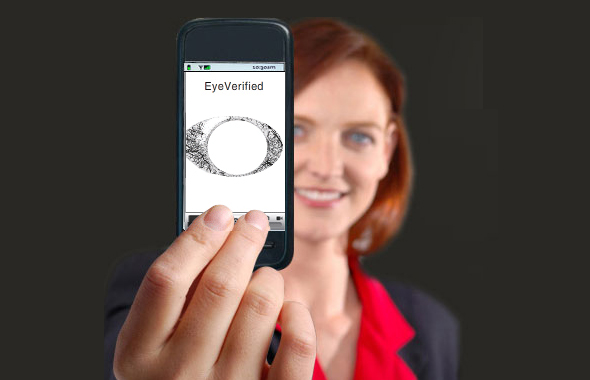
Your Eyes (or Voice) Are Your Password
Where We're Headed: Apple is already expected to unleash fingerprint ID in the iPhone 5S, but by 2018, your phone may recognize your eyes or your retina. This so-called "ocular scanning" or "eye vein biometrics" being developed by EyeVerify could be three times more secure than fingerprint ID. Prediction:Since we're going to talk to our phones, our voice will act as our security ID, and will use such voice-authentication solutions as KIVOX from Agito, voice-unlock in the just-released Baidu-Lenovo A586 smartphone in China. There’s also voice-security technology being developed at Carnegie Mellon University that converts your voiceprint into alphanumeric strings that are then transformed into passwords.
More: How To Use Your Laptop's Fingerprint Reader
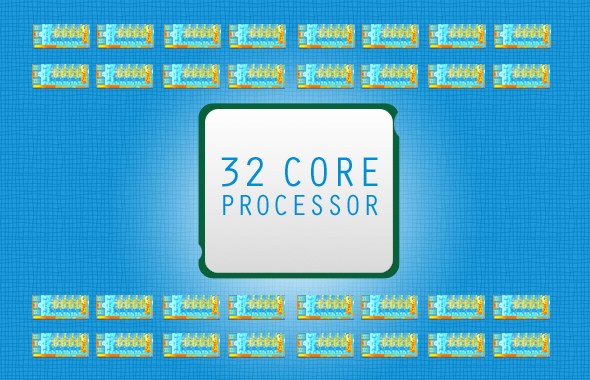
32-Core Processors
Where We're Headed: Every function a smartphone performs revolves around its brain power. Taking Moore's Law to its extreme conclusion, smartphones should be packing sub-20nm 256-bit, 32-core processors in five years. More likely, the upcoming battle between ARM and Intel (see Intel's potentially ARM-killing Silvermont) could give way to some new microarchitecture. Prediction: In five years, smartphones will be more powerful than today's most powerful desktops.
More: Intel Haswell Launched: 5 Things You Need to Know
Sign up to receive The Snapshot, a free special dispatch from Laptop Mag, in your inbox.
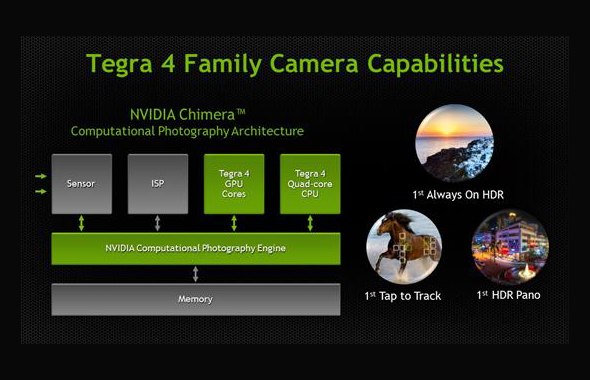
Computational Cameras
Where We're Headed: In five years, point-and-shoot digital cameras will be as antiquated as film cameras are now. That's because smartphone cameras will not be digital but computational, able to react almost as the human eye does, to almost instantaneously focus, track objects and adjust to variant lighting conditions. This ability will be made possible by technologies evolved from advances such as Nvidia's Chimera and DigitalOptics’ MEMS autofocus technologies. Prediction: The lines between still photo and video will disappear, thanks to features like HTC One's Zoe three-second video-still mode. All captured visuals will "move" for as long as the Shutter/Record button is pressed. Instead of having to choose to shoot either a video or a still, you will simply shoot and decide later if the result is a still or video — or both.
More: Smartphone Camera Shootout 2013
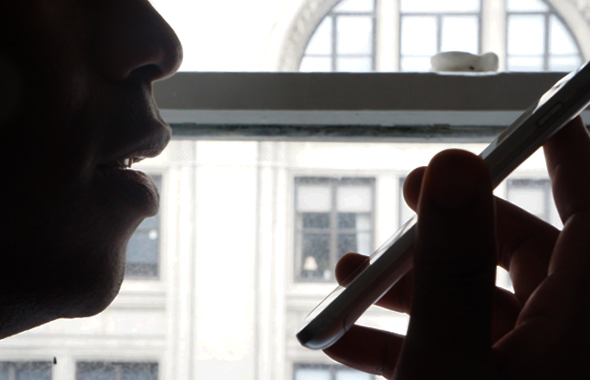
Voice Control
Where We're Headed: Yes, touch screens will continue to be important to smartphones. But thanks to more powerful processors and sensors, in five years, perhaps we'll see more mature and intuitive versions of the largely gimmicky Smart Scroll Samsung built into the Galaxy S4 and the "gaze detection" control Apple is eyeing (pardon the pun). But more likely to appear are more mature and intuitive voice controls, and those that can handle all device commands, such as music playback, answer call, ringer on/off and app booting, as well as information requests. Prediction: Instead of intoning "Galaxy, call mom," you'll imbue your phone with a distinct developing robotic personality and name, and it will only answer to you or other designated voices.More powerful processors will enable you to converse with your handset and turn your phone into a universal translator.
More: 7 Ways To Make Siri Smarter
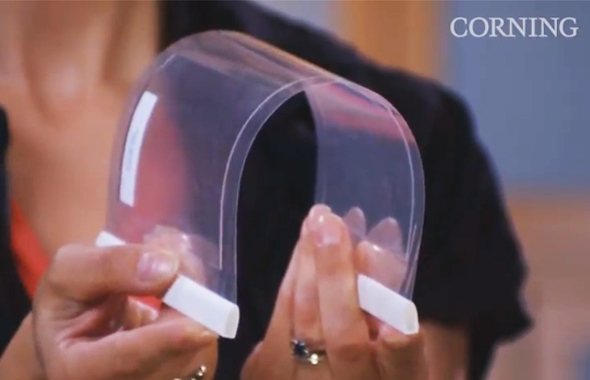
Screens That Bend
Where We're Headed: Many folks foresee a Roman-scroll-like smartphone —one that rolls out of a tube to create a large-screen display. This prediction would seem to result from the development of current bendable-screen technologies, such as Samsung's YOUM flexible OLED, Corning's Willow Glass and LG's unnamed flexible screen technology. More likely, however, future phones will feature displays that curve around a smartphone slab, either as a tapered glass edge, dual-sided viewing and touch functionality, or a single wide screen that can be folded in half like a wallet without a screen-splitting hinge in the middle. Think Sprint’s Kyocera Echo but much more evolved. Prediction: Smartphone screens will be flexible, thanks to new materials like elastor polymer, flexible circuit boards and battery reconfigurations. In fact, your entire phone will twist and flex to conform to your body and supply unique control functions. For instance, you’ll be able to twist your handset to turn it on or off, as outlined in Apple's iDevice flex patents and the prototype Nokia Kinetic device. Best of all, sitting on your phone in 2018 won't crack or break it.
More: 15 Amazing Apple Patents That Tell Your iFuture

Transflexive LCDs
Where We're Headed: Sunlight is a smartphone screen's Kryptonite. Enter transflexive LCD displays, which reflect ambient light, eliminating the need for powered backlighting in daylight and rendering bright, crisp and colorful images when the sun is shining bright. The problem is that transflexive screens are prohibitively expensive and lose contrast in dimmer conditions. As a result, no smartphone maker is tinkering with transflexive technology at the moment. Prediction: The need for a smartphone screen to stand up to sunlight is too acute to go unsolved, so we'll likely see a sunlight solution five years from now.
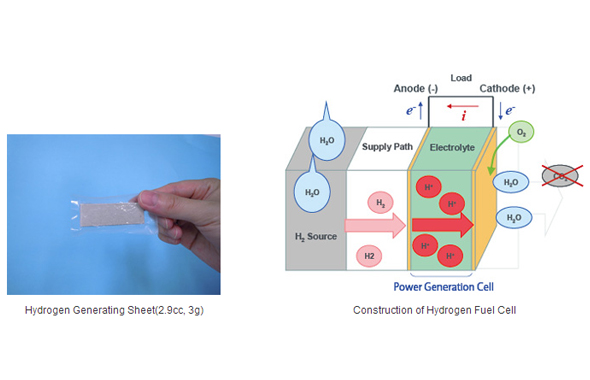
True All-Day Battery Life
Where We're Headed: Two developing technologies could produce power cells that could last for weeks without needing to be recharged. The first such technology is the hydrogen cell, which is being pursued by Apple as well as by a partnership between semiconductor maker ROHM, power-cell developer Aquafairy and Kyoto University. Perhaps more promising is a new technology called lithium-ion microbatteries. The developers of this technology at the University of Illinois claim lithium-ion microbatteries are 2,000 times more powerful than today's Li-ions, can be charged almost instantaneously and are powerful enough to jump-start a dead car battery. Prediction: By 2018, no one will be complaining about a dying or dead smartphone battery, unless they're trapped on a deserted island.
More: 10 Smartphones with the Longest Battery Life
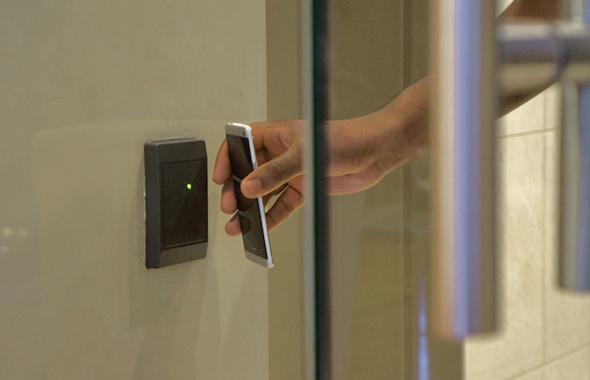
NFC Makes Phones the Keys to Everything
Where We're Headed: NFC. Yawn, right? Sure, near-field communication on phones is gaining in popularity, but it's still a feature that’s rarely used. Rarer still are NFC-enabled headphones, speakers or other tap-to-pair gizmos. Plus, mobile wallet adoption has been slow, perhaps because the iPhone still lacks NFC or because people don't trust their phone to secure their money. But Apple will eventually embrace NFC as if it had invented the technology, along with a range of tap-to-pair ear buds and docks from its accessory partners. Prediction: Yes, eventually, we'll wave our smartphone at the checkout counter to pay for sundries and tap-to-pair our smartphones with our smart TVs and computers to transfer captured visuals. In an NFC-enabled world, you'll use your smartphone to ride mass transit, open hotel rooms or your own front door, and get into events — in short, in 2018, you'll use your NFC smartphone to access anything you'd currently use a card or key to access.
More: Top 5 NFC Apps for Android Phones
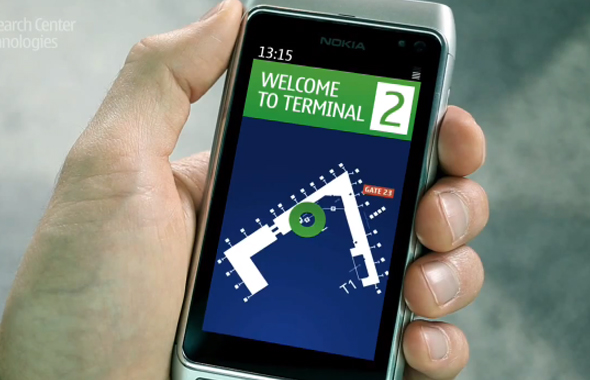
Indoor Positioning (IPS)
Where We're Headed: Using GPS, you can find your way in a major metropolis, suburbia or the middle of a forest. Several technologies, including RTLS (real-time locating system), can locate a person inside a mall, hospital, airport or office. Unlike GPS, which can't penetrate buildings, IPS installations require scattered fixed nodes on your smartphone that will provide your indoor position. While no IPS standards yet exist, the recently formed In-Location Alliance hopes to establish some sort of IPS direction. Prediction: In five years, you won't need to locate a facility map to find out You Are Here. Instead, you'll use your phone to not only find where you are, but to get directions to where you need to go within a mall, megastore or otherwise intimidating building complex.

Software Radio
Where We're Headed: All four national carriers have announced HD Voice implementation plans for rollout this year or next, but GSM-based systems from AT&T and T-Mobile are incompatible with CDMA-based HD Voice from Sprint and Verizon. As such, none of the carriers is promoting this highly desired conversational improvement. But an answer is coming in the form of software-defined radio (SDR), a concept being promoted by the Wireless Innovation Forum. SDR could not only improve voice quality without facing compatibility issues, but also remove all frequency incompatibility by replacing bandwidth-specific processors, tuners and antennas with software-based solutions. Prediction: One way or another, voice quality, connection integrity and incompatibility between domestic and international networks will be solved in five years, requiring only a software upgrade, rather than a new phone to connect to new frequencies.
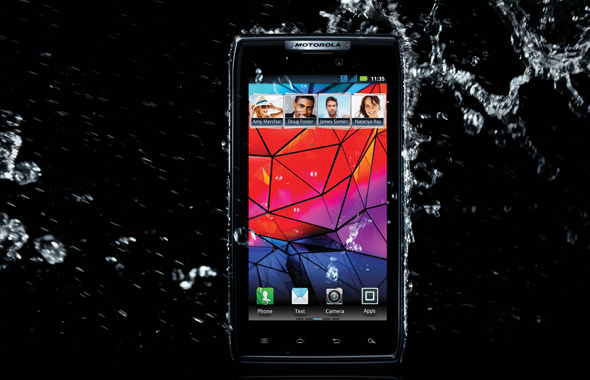
Waterproof Goes Mainstream
Where We're Headed: Three companies — Liquipel, Hz0 (WaterBlock)and P2i (Aridion) — have been providing smartphone waterproofing technology for the last few years. Motorola, for instance, uses P2i's solution, dubbed SplashGuard, on a few handsets. Liquipel does offer to waterproof a select number of handsets and also sells pretreated waterproof iPhone 5sand Samsung Galaxy S3s. Prediction: A company that's more influential than Sony in the smartphone business will decide prewaterproofing its handsets is a good market differentiator, which will appropriately open the waterproof smartphone floodgate.
More: 6 Waterproof Gadgets of CES 2013: No More Water Damage Worries
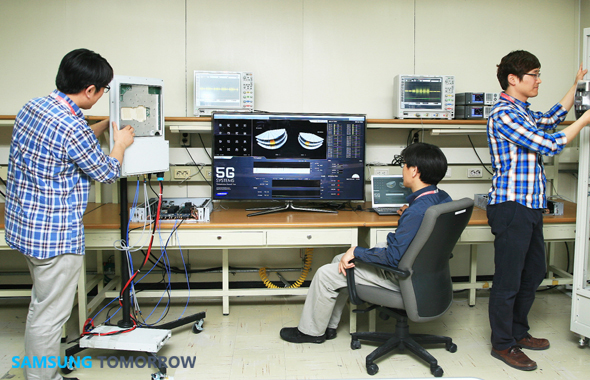
LTE Advanced/5G
Where We're Headed: Like with HD Voice, all four major carriers seem to be on different schedules for rolling out the next generation of 4G LTE: LTE Advanced, or IMT-Advanced. T-Mobile is reportedly leading the way because its newer LTE network can already support LTE Advanced, and is able to combine noncontiguous spectrum bands to create fatter pipes and facilitate Advanced's theoretical three-times-faster data speeds. The other three major national carriers all have announced or hinted at an LTE Advanced rollout later this year or early next year. But LTE Advanced is not 5G, which requires a higher-frequency spectrum and faces a plethora of technical hurdles. For instance, Samsung recently demonstrated 5G, delivering 1 Gbps in a millimeter wave (mmWave) over 28 GHz frequency bands, but propagation range is an issue, and even Samsung admits commercialization likely won't come before 2020. Prediction: According to an International Telecommunications Union report, connection speeds attained by LTE Advanced will be akin to connecting a fiber-optic cable to your smartphone and will produce speeds 100 times faster than 3G while using far less bandwidth. As a result, downloading or streaming an HD video or other massive file to a smartphone in 2018 will be as fast and seamless as doing the same on your Ethernet-connected desktop PC.
More: Samsung Preparing 5G Networks for 2020 Launch

Seamless Wi-Fi Everywhere
Where We're Headed: The Wi-Fi Alliance and the Wireless Broadband Alliance — along with several carriers, cable companies and hotspot provider Boingo — are all getting ready to roll out Passpoint-certified Wi-Fi. Also known as Hotspot 2.0 and Next Generation Hotspot (NGH), Passpoint promises automatic, seamless and secure connectivity to Wi-Fi Passpoint hotspots. No more scrolling through lists of available Wi-Fi networks, and no more wrestling with passwords, sign-in procedures or interstitial pages. Passpoint makes Wi-Fi connectivity as brainless as connecting to a cell network, and is due to start being rolled out later this year. Prediction: By 2018, you'll be able to leave your house, travel to an airport, get on a plane and land in a foreign city — and never lose your Wi-Fi connection. In fact, your cellular connection — 4G, LTE Advanced or whatever — will end up being your backup data network, since Passpoint Wi-Fi will be close to ubiquitous worldwide.

Wearable Designs
Where We're Headed: Smartphones may not even look like smartphones in 2018. We already know that bendable screens will alter your smartphone's ergonomics and aesthetics, and there already are several smart watches out there, such as the Sony SmartWatch, the Pebble and i'm Watch, to name a few. Apple is rumored to unveil its own iWatch later this year. Prediction: In 2018, smartphones will be two-piece systems: a "CPU," maybe imbedded in something you already wear — your shoes, a belt, a watch — or clipped to your clothes. You'd view data on a variety of screens that wirelessly connect to this smartphone CPU, whether it’s smart glasses, like Google Glass, or a heads-up display in your car. Maybe you'll even opt for an ocular implant that lets you see your "screen" floating out in front of you.
More: 5 Reasons You’ll Wear a Smart Watch
- Best Smartphones 2013
- Smartphone Buyers' Guide 2013: 7 Things You Need to Know
- Top 10 Most Stylish Smartphones
